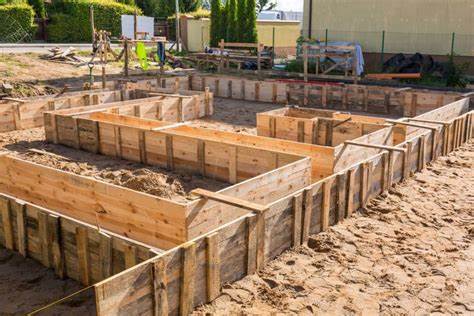What do you need to know about your state’s geography regarding your home’s foundation? Many people don’t realize that the type of soil and terrain can greatly impact how stable their home is. In this blog post, we will discuss the different types of foundations common in each state and how geography affects them. We will also talk about ways to prevent foundation damage in your home. So, whether you’re buying a new home or want to be prepared for any potential problems, read on for all the information you need!
The type of soil and your home’s foundation:

source: pinterest.com
Research shows that three types of soil can be found in the United States: sand, clay, and silt. Each soil type has different properties that can affect your home’s foundation.
Sandy soil is the most common type of soil in the United States. It is well-drained and does not hold moisture well. This type of soil is good for foundations because it will not expand or contract with changes in moisture content.
Clayey soil is another common type of soil in the United States. It is made up of small particles that are tightly packed together. This type of soil expands when it gets wet and shrinks when it dries. This can cause problems for foundations because they can crack as the clay soil expands and contracts.
Silty soil is the least common type of soil in the United States. It comprises medium-sized particles that are not as tightly packed together as clay soil. This type of soil has some of the same properties as sandy soil but can retain more moisture than sand. Silty soil is good for foundations because it will not expand or contract with changes in moisture content.
The soil your home is built on can have a big impact on your foundation. If you live in an area with clayey or silty soil, you may want to have your foundation checked regularly to ensure the expanding and contracting soils are not damaging. If you live in an area with sandy soil, you likely will not have to worry about your foundation being damaged by the soil.
If you’re unsure what type of soil is in your area, you can ask a local expert or contact your state’s geological survey. Knowing the soil type in your area can help you keep an eye on your foundation and ensure it stays in good condition.
The impact of moisture:

source: pinterest.com
States across the United States have different levels of moisture in the air. The amount of moisture in the air can affect your home’s foundation. If there is too much moisture in the air, it can cause your foundation to expand. This can lead to cracks and other problems with your foundation. If there is not enough moisture in the air, it can cause your foundation to contract. This can also lead to cracks and other problems with your foundation.
The best way to protect your home’s foundation from the effects of moisture is to use a dehumidifier. A dehumidifier will remove excess moisture from the air and help keep your home’s foundation healthy. Another way to protect your home’s foundation is to make sure that you have proper drainage around your home. If water is allowed to pool around your home, it can seep into the ground and cause your foundation to settle. This can lead to cracks and other problems with your foundation. Make sure that you have gutters on your home and that they are clear of debris. This will help ensure that water is properly drained away from your home.
Probability of earthquakes and natural disasters:

source: pinterest.com
The West Coast is more prone to earthquakes than the East Coast. The Midwest is in the middle of what’s called a “seismic gap.” The New Madrid fault line, which extends from Missouri to Tennessee, has the potential to cause large-scale devastation but hasn’t had a major earthquake since 1812. The East Coast is at risk for hurricanes and tropical storms. Parts of the Midwest are at risk for tornadoes. And the entire country is at risk of wildfires.
So, what does this mean for your home’s foundation? If you live on the West Coast, it’s important to have a foundation that can withstand an earthquake. If you live on the East Coast, it’s important to have a foundation that can withstand hurricane-force winds. And if you live in the Midwest, it’s important to have a foundation that can withstand severe weather conditions like tornadoes and thunderstorms.
No matter where you live in the United States, it’s important to ensure your home is built on a solid foundation. A strong foundation is the key to keeping your home safe and sound, no matter what Mother Nature throws your way. If you’re not sure whether or not your home has a strong foundation, it’s a good idea to have it inspected by a professional. A professional can assess your foundation’s condition and ensure it is up to code. They can also make recommendations for repairs or improvements that may need to be made. Take the time to learn about your home’s foundation and how it can be affected by your state’s geography. Knowing what you need to do to keep your home safe and sound is important. By educating yourself, you can rest assured knowing that your home is in good hands.



